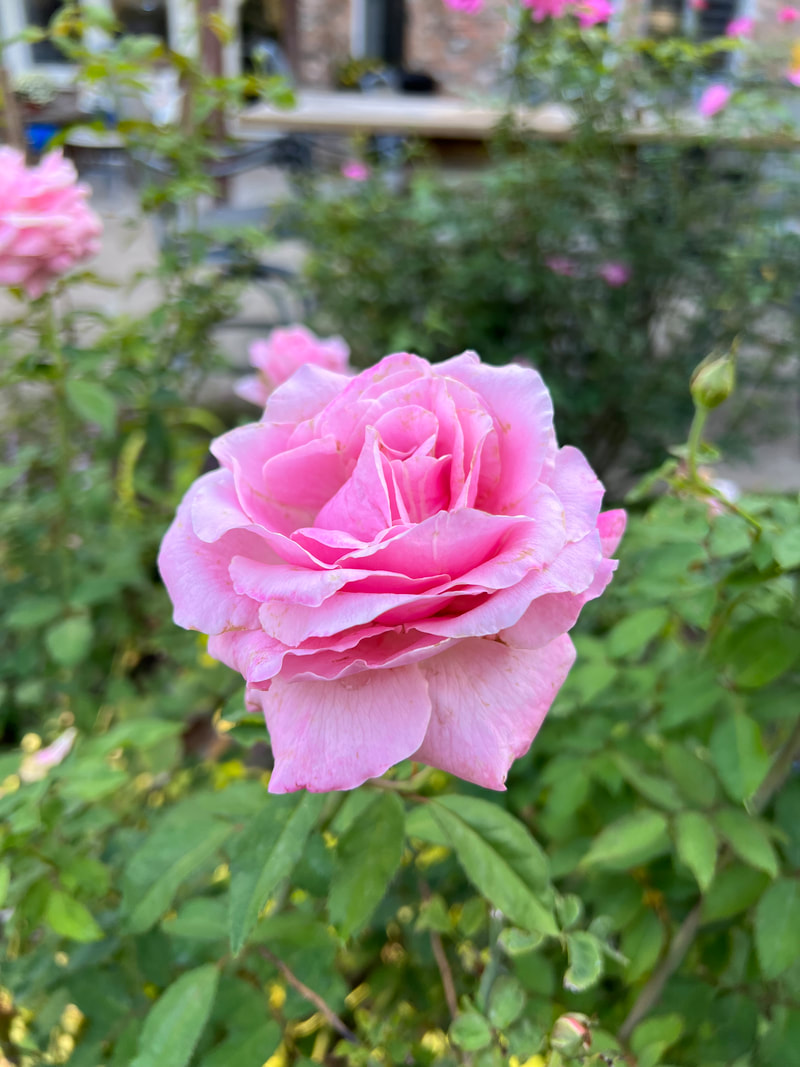|
Monarda, also known as bee balm, horsemint, and wild bergamot, (among other names, depending on the variety and region) is a wonderful, useful, versatile herb. I have two varieties in my garden -- Monarda didyma (the red) and Monarda fistulosa (pink).
It's not a very demanding plant. While it does best with an average amount of water and sunlight, it will get by with less of both. In my garden, the Monarda fistulosa does get powdery mildew sometimes. In the wild, this variety is commonly found growing in dry, rocky conditions and the area we live in is steamy in summer. But it blooms all the same, usually from spring through fall. In fact, Monarda is very hardy, being a member of the mint (lamiaceae) family. Unlike mints, it's not invasive. But if it's happy, it can grow into a nice, big clump that you might want to divide every few years. It's a pretty plant and I'm not the only one who likes it. Bee balm holds enormous attraction for pollinators, hence its nickname. For this alone, it's worth its space in the garden. Native to North America, it's loved not only by bees, but also butterflies and hummingbirds. I also enjoy it in tea. It helps settle the stomach and soothe the nerves. To me, its distinct flavor is between grassy and citrusy. Is "herbally" a word? Anyway, I make a personal blend of spearmint, lemon balm, and bee balm that is refreshing hot or cold. Whether you enjoy it in a cup of tea, appreciate a carefree plant in your garden, or enjoy watching hummers hover and bees at work or all of the above, Monarda is a wonderful addition to any garden.
0 Comments
Leave a Reply. |
Our GardenFor years, my husband and I worked at creating a series of gardens on our four-acre lot in a rural, Texas subdivision west of Houston. I have to say, it was a fantastic experience. Now, I have a pocket garden on a golf course. Archives
June 2024
Categories
All
NewsletterFrom me to you with a smile. Thank you!You have successfully joined our subscriber list. |





 RSS Feed
RSS Feed